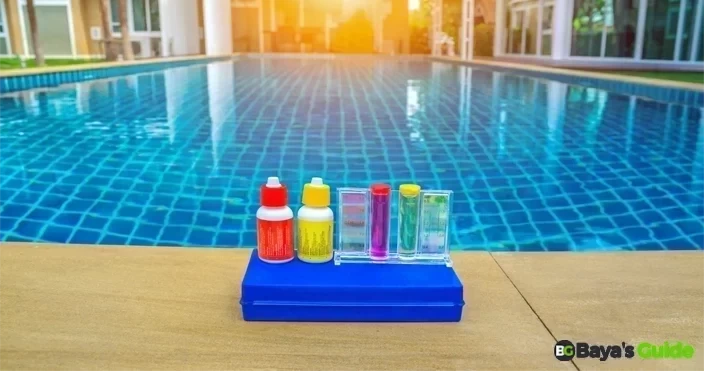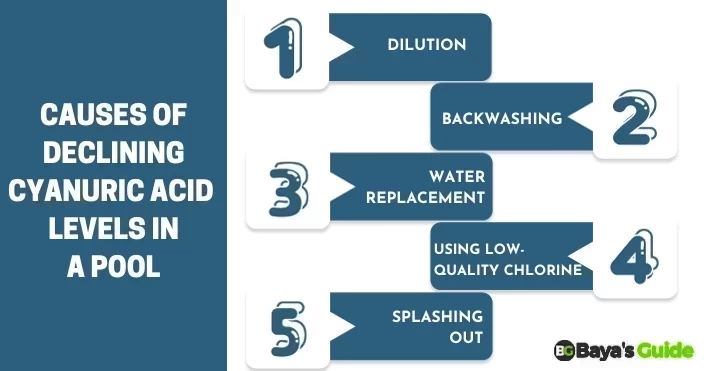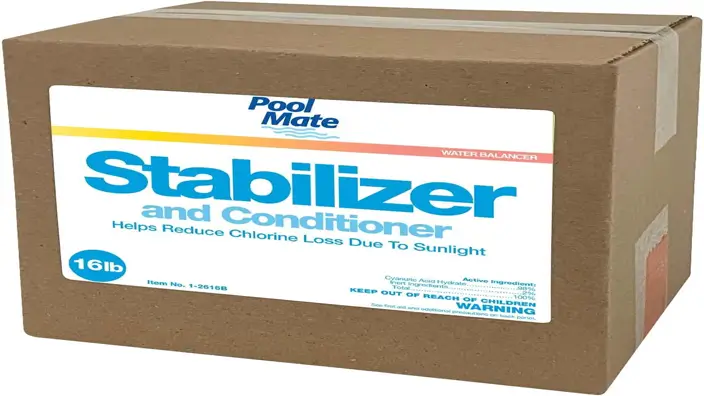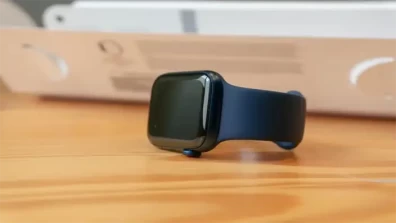Do you like swimming like others? If so, then the effective cyanuric acid stabilization of chlorine through the use of the optimal levels of cyanuric acid is ideal for you. It is the main condition for good disinfection and healthy state of your pool. Cyanuric acid works as a stabilizer that prevents chlorine from losing strength against the harmful ultraviolet light from the sun. It allows chlorine to remain more effective. The preferred level of cyanuric acid in a pool is usually about 30 to 50 milligrams per liter (mg/mL). It guarantees that the chlorine molecules react slowly. and therefore come with a longer effective lifetime, so they remain active in daylight.
Over-drainage of cyanuric acid, in other words, decreased levels leads to more chlorine consumption. It makes it harder to sanitize the pool. Don't worry! With our simple instructions, you'll eventually learn the best way to operate it. It will result in the perfect levels of cyanuric acid and a clear swimming experience.
Table of Contents
- Cyanuric Acid - Why Is It Used?
- Consequences Of Low Cyanuric Acid's Level In Pool
- Why Cyanuric Acid's Level Fall In Pool?
- How To Raise Cyanuric Acid In A Pool? Step-By-Step Guide
- Ways To Raise Cyanuric Acid In Pool
- Adding Stabilized Chlorine
- 16 lb Pool Mate 1-2604B-04 Stabilizer & Conditioner For Swimming Pools
- Maintaining Optimum Cyanuric Acid Level In Pool
- Frequently Asked Questions
- Conclusion
Cyanuric Acid - Why Is It Used?
Before we dive into the detailed steps of raising the CYA level in the pool, let’s understand some of the basics. Pure cyanuric acid, also known as pool stabilizer, pool conditioner, or CYA, protects the chlorine in your swimming pool against the sun’s ultraviolet rays. So, basically, it is your pool’s sunscreen. As a result, the liquid chlorine molecules in your pool will stay active for a longer period.
Maintaining proper CYA levels is crucial to ensure that chlorine doesn’t break down rapidly and the pool is safe from bacterial or fungal growth. Ideally, the CYA levels range from 30 to 50 parts per million (ppm), but they can differ based on the pool’s size and location. However, WHO recommends that the CYA levels must never exceed 100 ppm. Also, you have to make sure that your free chlorine levels are 7.5% of the CYA levels.
Consequences Of Low Cyanuric Acid's Level In Pool
When the liquid cyanuric acid level falls too low, you will face several undesirable issues in your pool. Here are some of the most common issues faced by pool owners because of low CYA levels.
- Since cyanuric acid is low, the chlorine will be vulnerable to UV radiation from the sun. This will reduce the effectiveness of chlorine in the pool. If this level is low, you can use unstabilized chlorine in the pool.
- You will need more chlorine to stabilize its concentration and maintain the appropriate pool's cyanuric acid levels.
- Low chlorine leads to the growth of unwanted bacteria and algae in the pool, hence affecting the pool’s hygiene.
- Without proper cyanuric acid maintenance, adding more chlorine is not an effective solution and will not last long.
- Low cyanuric acid levels can also increase the pH level of the water, which can not only lead to algae bloom but also cause corrosion of metal parts in pools such as heaters, pumps, or propellers.
Why Cyanuric Acid's Level Fall In Pool?
There can be various reasons why cyanuric acid would go down in your pool. Let’s take a look at some of the most common ones:
1- Dilution
Adding fresh water to your pool is a repeated activity that is necessary to balance out other chemicals like calcium. However, adding too much water into the pool can lower the CYA levels. Dilution can also occur because of rainfall. After excessive rains, the water in your pool can get mixed with unfiltered rainwater, which can reduce the CYA levels.
2- Backwashing
Cleaning the filter equipment in your pool and backwashing can also reduce the CYA levels and have other side effects on the pool. So, you must check the CYA levels before and after the activity and add the pool stabilizer if necessary.
3- Water Replacement
Partially or completely draining and refilling your pool will also dilute or completely eliminate the cyanuric acid levels. Hence, whenever you replace the water in your pool, you must add the pool conditioner to balance out the CYA levels.
4- Using Low-Quality Chlorine
One of the rare issues with low CYA levels is using unstabilized or low-quality chlorine in the pool. This unstable chlorine can react with the chemicals to form sodium hypochlorite ions that can degrade quickly in sunlight. Hence, the chlorine present in the water will reach aggressively with the cyanuric acid to stabilize, which will lower the levels of cyanuric acid in the water.
5- Splashing Out
While splashing out might seem like fun, overdoing it can affect the concentration of chemicals in the water. So, if you have been splashing the water out too frequently, you should definitely check the concentration of CYA in the pool water.
How To Raise Cyanuric Acid In A Pool? Step-By-Step Guide
Now that you understand the importance of cyanuric acid in your pool water as well as the consequences of not maintaining it properly, let’s take a look at how you can raise cyanuric acid in the pool.
Step 1: Testing the Water
First of all, you need to find out how much cyanuric acid you actually have in the water. That will aid you in calculating how much acid you need in the pool to maintain the optimum level of CYA. You must balance the cyanuric acid with other chemicals in your pool and it is very important to check this balance every week. There are various methods to check this. Let’s discuss the easiest and most common ones.
Using Test Strips
You can use test strips that are chemically formulated to detect cyanuric acid. However, your normal pH strips can’t do the job. You need to purchase specific strips that are made to test the cyanuric acid levels.
Once you dip the strip in water for about 30 seconds, it will change color and that will help you detect the level of CYA in water.
Using A Liquid Turbidity Test
If you are unable to find the strips, then you can use a liquid turbidity test kit. Many of these kits conveniently include a small container designed for collecting a water sample.
- Begin by introducing the powdered solution into the container and giving it a gentle swirl, allowing the solution to dissolve seamlessly into the water.
- After a brief wait of 1 to 3 minutes, proceed to fill one sample cell with a portion of your untested pool water.
- Simultaneously, fill another sample cell with some of the tested pool water.
- This setup will pave the way for you to make a side-by-side comparison with the results of an untouched sample.
- Make good use of the chart that accompanies your test kit to pinpoint the CYA level.
Step 2: Determine If You Need To Raise CYA Level
Conducting the test mentioned in Step 1 will help you find out the current cyanuric acid level of your pool water. The CYA level must be between 30 ppm to 50 ppm. However, you must check the manufacturer’s recommendation for your pool’s size. You must keep in mind that the World Health Organization strictly restricts cyanuric acid to 100 ppm in your pool. It must not exceed that level.
Step 3: Adding Cyanuric Acid to Pool Water
Once you have determined whether you need cyanuric acid, the next step is adding it to the water. Calculate the amount of cyanuric acid you will need in the water. For that, you will have to follow the manufacturer’s instructions for cyanuric acid. You will also need to find out how many gallons of water your pool holds to determine how many pounds of cyanuric acid you will need.
You can use either the powered or liquid form of the product. If you are using the powdered form, then you must fill half a bucket of warm water and dissolve the powdered acid into it. Wear gloves and protective equipment to protect yourself from any side effects. Once the powder has dissolved completely, you can add it to the pool. If you are using liquid CYA, then you can dissolve it directly into the pool. You must increase the levels using a small amount. You can use the skimmer or filter tank, but it is highly recommended that you directly add the CYA into the pool.
Step 4: Keep The Pool Pump Running
Keep the pool pump running for 2 to 4 hours to ensure that the acid distributes across the pool evenly. During this time, you must not use the pool for swimming. Wait at least 3 to 4 hours, and then you can start using the pool again.
Step 5: Retest The CYA Levels
In the end, you must recheck the cyanuric levels and pH of your pool and adjust it as required. This will ensure that you have adjusted the CYA to the optimum level.
Ways To Raise Cyanuric Acid In Pool
| Pool Maintenance Stage | Description |
| Testing The Water | Measure current cyanuric acid levels to determine the necessary adjustment for maintaining a balanced chemical composition in the pool. |
| Determine If You Need To Raise CYA Level | Check current cyanuric acid levels to ensure they fall between 30 ppm to 50 ppm, considering pool size and adhering to WHO guidelines. |
| Adding Cyanuric Acid To Pool Water | Follow the manufacturer's instructions to calculate the required amount of cyanuric acid based on pool size, dissolve it in warm water, and add it to the pool. |
| Keep The Pool Pump Running | Run the pool pump for 2 to 4 hours after adding cyanuric acid to ensure even distribution, avoiding pool use during this time for effective stabilization. |
| Retest The CYA Levels | Wait 3 to 4 hours, then retest cyanuric acid levels and pH, adjusting as needed to achieve the optimal balance and ensure the effectiveness of the treatment. |
Adding Stabilized Chlorine
If you do not need a substantial increase in CYA levels, the current level requires less rise than 10 ppm; then, you can use stabilized chlorine as an alternative to cyanuric acid. The stabilized chlorine comes in tablet or stick form. Technically, it is chlorine infused with cyanuric acid. Simply check the product packaging for the manufacturer's instructions, which will guide you on precisely how many tablets or sticks to introduce directly into your pool.
What makes stabilized chlorine so handy is its ability to infuse cyanuric acid into your pool without causing any dramatic acid-level fluctuations. But here's a quick tip: if you're unsure whether the chlorine you're currently using contains cyanuric acid, just give that label a closer look. Keep an eye out for terms like "Trichlor" or "Dichlor" – they're your green light indicators that cyanuric acid is on the menu.
You Might Also Like:How To Clean A Hot Tub Filter
16 lb Pool Mate 1-2604B-04 Stabilizer & Conditioner For Swimming Pools
About This Item
- Elevates cyanuric acid level.
- Minimizes chlorine loss caused by sunlight.
- Decreases chlorine consumption by up to 25%.
- Formulated with 100% cyanuric acid.
- Enhances the effectiveness of chlorine.
Maintaining Optimum Cyanuric Acid Level In Pool
Here are some professional tips that will help you maintain optimum CYA levels in your pool without needing to add cyanuric acid again and again:
1- Regular Water Testing
Test your pool water weekly to keep cyanuric acid levels between 30-50 ppm.
2- Pool Cover
Use a pool cover in tropical or sunny areas to prevent excess water and maintain cyanuric acid levels.
3- pH Monitoring
Maintain pH levels between 7.2 and 7.6 to keep cyanuric acid and other pool chemicals effective.
4- Chemical Handling
Follow the manufacturer's instructions when using algaecides and chemicals to avoid disrupting cyanuric acid levels.
By following these steps, you'll discover that maintaining the cyanuric acid levels in your pool isn't rocket science; it's simply about commitment to cleanliness and proper maintenance.
Frequently Asked Questions
Is It OK To Have Low Cyanuric Acid In The Pool?
No, it is not ok. The low cyanuric acid levels in the pool can lead to several problems. These problems include a reduction in the effectiveness of chlorine, an increase in pH level, and an increase in the growth of bacteria and algae.
Do Chlorine Tablets Raise CYA?
Yes, but they do not result in a significant increase. So, if you need only a minor increase in CYA levels, that is less than 10 ppm, then you can use stabilized chlorine tablets that are infused with CYA.
Will Baking Soda Raise The Stabilizer In The Pool?
No, baking soda can only alter the pH and alkalinity of the pool. It is not a pool stabilizer or conditioner and doesn’t affect the concentration of CYA or Chlorine in the water. So, it won’t have any effect on the stabilization of the pool.
How Do I Add Cyanuric Acid To My Pool Without A Skimmer?
You can add cyanuric acid to your pool by pre-dissolving it in a bucket of water and then pouring the solution directly into the pool. You can also use liquid CYA and pour it directly into the pool.
How Long Does Chlorine Last Without Cyanuric Acid?
Chlorine can dissipate quickly without cyanuric acid protection, usually within a few hours on a sunny day. Hence, you must use cyanuric acid that acts as a protective shield and protects your pool from UV sun rays.
Conclusion
To sum it all up, raising cyanuric acid levels in the pool is essential for proper maintenance of your pool. Without optimum CYA levels in your pool, the water won’t remain chemically balanced or stabilized, which will lead to the disintegration of chlorine on a sunny day. Hence, you must maintain a proper concentration of pool stabilizer to ensure that the pool water remains clean, clear, and safe for swimming. With the simple steps and the detailed guide that we have discussed above, you will be on your way to a well-balanced pool and endless summer fun. Happy swimming!


























